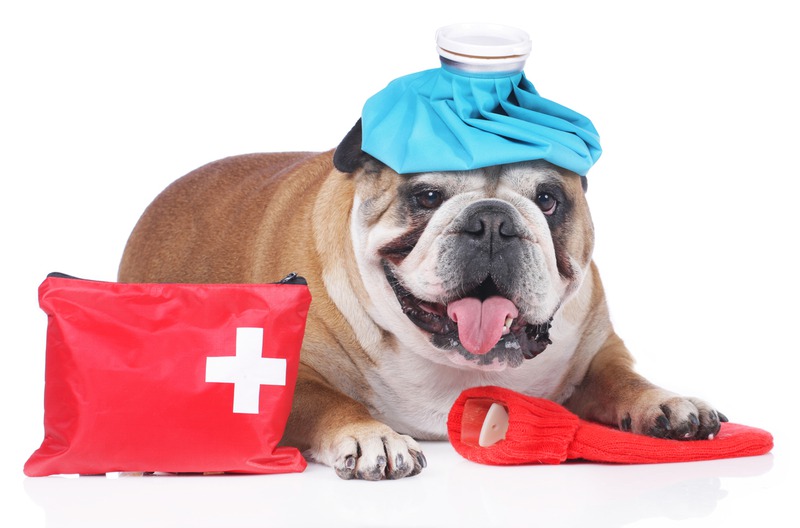How Can You Prepare for a Pet Medical Emergency?
When you bring a furry friend into your life, you sign up for a bundle of joy and a lifelong commitment. But let’s face it: emergencies can happen anytime, and our pets are not immune to accidents or sudden health issues. Preparing for a pet’s medical emergency is as critical as the daily walks or regular vet checkups.
In this article, we’ll talk about steps you can take to ensure you’re ready for the unexpected to help keep your beloved pet safe and healthy.
Understanding Emergencies
Pet emergencies can range from acute injuries to sudden illness and everything in between. Recognizing what constitutes an emergency and knowing how to respond is vital. Signs that your pet is distressed might include difficulty breathing, excessive vomiting or diarrhea, suspected poisoning, seizures, or obvious pain. In such cases, swift action could mean the difference between life and death.
Emergency Veterinary Care
Having a plan for emergency veterinary care is the first step in preparedness. Finding a reliable emergency vet before you ever need one is crucial. Look for hospitals or clinics that offer 24-hour service so you’re covered at any time of the day. Knowing where to go and how to get there quickly can save precious time when dealing with emergencies.
First Aid Training and a Kit
A little knowledge goes a long way. First Aid training for pet owners can provide you with the skills needed to stabilize your pet until professional help is available. If you’re not sure where to find training, check with local veterinary clinics or animal welfare organizations; they often offer or can recommend resources.
Creating a pet-specific first aid kit is an excellent complement to your training. Here’s what you should include:
-
Contact information for your vet and nearest emergency clinic
-
A first aid book for pets
-
Gauze, non-stick bandages, and adhesive tape for controlling bleeding and bandaging wounds
-
Hydrogen peroxide (to induce vomiting with vet guidance)
-
Thermometer
-
Eye dropper or large syringe without a needle for administering medications or flushing wounds
-
Disposable gloves for cleanliness
-
Scissors with blunt ends
-
Tweezers
-
Saline eye solution
-
Ice pack
Remember, your kit should be easily accessible at home, and you might consider creating a second one for your car.
Pet Proofing Your Home
Pet proofing is for more than just when you first bring your pet home. It’s an ongoing process of ensuring a safe environment that minimizes the chances of an accident. Keep potential toxins like cleaning supplies, human medications, certain plants, and foods harmful to pets out of reach.
Securing trash cans and keeping small objects that could be swallowed away from inquisitive mouths are critical strategies for keeping your pet safe.
Plan Financially for Emergency Care
One aspect of pet emergencies that can be particularly daunting is the cost. Veterinary bills can be significant, especially for emergency treatment. Planning financially can reduce stress in crises. Consider setting up a pet emergency fund or looking into pet insurance to help cover unexpected costs.
Some clinics also offer payment plans, so exploring these options in advance is wise.
Pet Vaccinations and Parasite Prevention
Prevention is always better than a cure. Keeping your pet up-to-date with vaccinations helps protect them from many infectious diseases. In Staten Island, ensuring your pet’s vaccinations and parasite prevention are current is especially important due to the local climate and wildlife that can expose pets to unique health risks.
Pets are naturally curious; sometimes, that curiosity can land them in trouble. Being familiar with the hazards in your region and taking preventive measures, such as regular checkups, vaccines, and parasite control, can vastly reduce the chance of emergencies related to infectious diseases or infestations.
Educate Yourself on Common Pet Emergencies
Becoming informed about the common emergencies that can affect your pet is a proactive way to prepare. Knowledge about conditions like heatstroke, accidental poisonings, or common injuries means you’ll be better equipped to prevent and recognize these emergencies if they arise.
For example, you should know the signs of heatstroke (panting, lethargy, drooling) and the dangers of certain human foods (chocolate, grapes).
Understanding Common Symptoms
Like us, pets can experience various symptoms that indicate distress. Some of these symptoms might include:
-
Sudden changes in behavior or activity level
-
Unexplained weight loss or gain
-
Difficulty breathing or persistent cough
-
Changes in appetite or drinking habits
-
Visible discomfort or pain
-
Seizures or loss of consciousness
Being attuned to what’s normal for your pet will allow you to spot these alarming signs early. Once you notice something’s off, consult your vet immediately to determine the next steps.
CPR for Pets
Cardiopulmonary resuscitation (CPR) can be a lifesaving procedure for pets, just as it is for humans. Taking a course in pet CPR gives you the knowledge and confidence to perform this emergency procedure if needed. Remember, while CPR can be a critical measure, getting your pet to professional help as soon as possible is essential.
Veterinary Surgery
In some cases, pets may need surgical care, whether from an unforeseen injury or for a more routine procedure. Understanding what veterinary surgery involves and what to expect can help alleviate your anxieties and contribute to a smooth recovery for your pet.
Surgical care will vary depending on the procedure, but a typical surgery involves pre-surgical assessments, surgery, and post-operative care. Your vet will explain the process and provide instructions for at-home care post-surgery. Regular post-operative checkups are crucial for monitoring your pet’s healing and preventing complications.
Prepare Household Members
All household members must be on the same page regarding pet emergency preparedness. This means educating everyone on what to do in an emergency, where the first aid kit is, and who to call. You could even practice a few scenarios to ensure everyone knows their role and remains calm during an emergency.
Final Thoughts
Your pet is part of the family and should be included in any family emergency evacuation plans. This includes having a pet carrier ready, a supply of food and water, and any medications they might need. Also, keep a list of pet-friendly accommodations if you have to leave your home unexpectedly.
You hope never to face a pet medical emergency when it’s all said and done. But by preparing for one, you’re investing in peace of mind and the well-being of your beloved animal companion. The steps you take today to prepare can provide a safety net, allowing quicker, more effective action when needed most. After all, our pets rely on us just as much as we rely on the joy and companionship they bring into our lives.
Remember, time is of the essence in an emergency. By being proactive now, you’ll be ready for anything life throws your way – paw prints and all.








